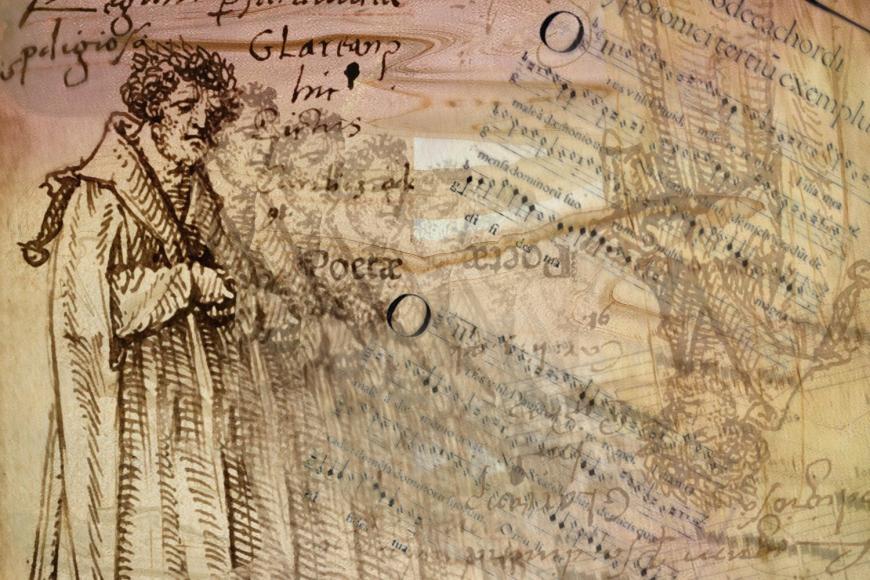
When Edward Schocker was a student at Mills College in the late 1990s, composer Lou Harrison first introduced him to just intonation — a system of tuning that favors whole-number ratios between pitches, which some musicians prefer over equal-temperament tuning, the default standard today.
“It was like discovering a different world … like being told about oxygen after a whole life of breathing it,” Schocker recalls, as we discuss his upcoming presentation of Dodecachordon 1–6, an ongoing series of works exploring just-tuned versions of the historical church modes. On Nov. 13 at Shapeshifters Cinema in Oakland, each installment will sound for an hour, starting at 11:55 a.m. to coincide with solar noon and going until after dusk. The timing is deliberate, as the six works are arranged from brightest to darkest through Schocker’s tuning adaptations — the sparkling Lydian and Dorian modes are followed by the familiar “major” Ionian and “minor” Aeolian and finally the twilight zone of the Mixolydian and Phrygian.

The composer describes this event as neither performance nor installation but a kind of “sounding out” of the modes themselves in the space, with the sounds’ interactions causing what Schocker nicknames “little whirling dervishes.” The psychoacoustic phenomenon he refers to is one of the neat consequences of rational tunings, as the harmonics of whole-number intervals are in just ratios among each other. This causes the emergence of perceptual phenomena like summation and difference tones, which change depending on a listener’s location and orientation in the resonating space.
From a practical standpoint, Dodecachordon uses multiple electric guitars, with the lowest two strings retuned to the particular pitches of each movement’s mode. Schocker places electromagnetic drivers (commercially known as EBows) on a string of each to excite a continuous drone, yielding harmonically tuned chords through the combination of all the instruments employed. By altering the location of the EBow lengthwise on each string, Schocker can highlight individual harmonics, subtly changing the resonating balance in the room (and maybe nudging the partials’ dance into a different pattern). Throughout the day, artist Keith Evans will improvise light projections to underscore the shifting harmonic balance from light to dark.
As the longtime director of Thingamajigs — a Bay Area organization that champions instrument building, experimental tunings, and hands-on education — Schocker sees this event as the opportunity to share his enthusiasm for do-it-yourself musical innovation, as well as to create an environment in which people can experience a revelatory sonic experience. The long duration serves as an invitation of sorts, with the audience free to come and go through the entire afternoon. It also echoes the first steps he made in his just-tuning explorations, back when he was working as a handyman for Mills’ ESL Department, cleaning and patching up dorm rooms in between sessions. The empty dorms would become makeshift recording studios, with electric guitars left to resonate for an hour or so, providing the young composer with the necessary long drones upon which to explore tuning patterns.
The title of the work is a reference to Heinrich Glarean, the 16th-century Swiss monk whose musical-theoretical exploration eventually led to the modern establishment of the six melodic modes. Glarean believed that there was further musical ground to be charted beyond the 12 modes he suggested; half a millennium later, Schocker plans to expand his current set of compositions to include six additional hybrid modes, blending light and darkness into novel harmonic combinations and continuing to marvel at the whirling dance of the overtones.
Editor’s note: This article has been updated with a new performance date for Dodecachordon 1–6 at Shapeshifters Cinema, rescheduled from Nov. 6 to Nov. 13.



